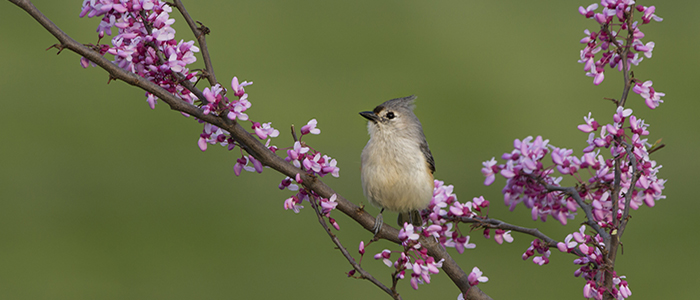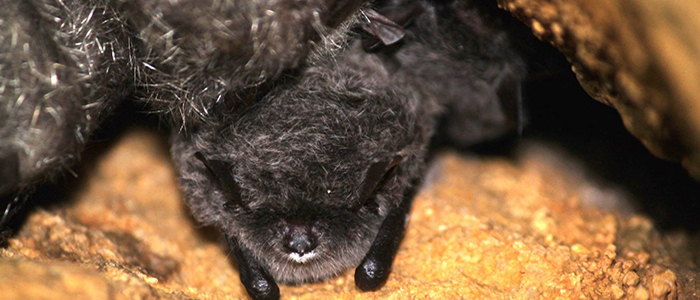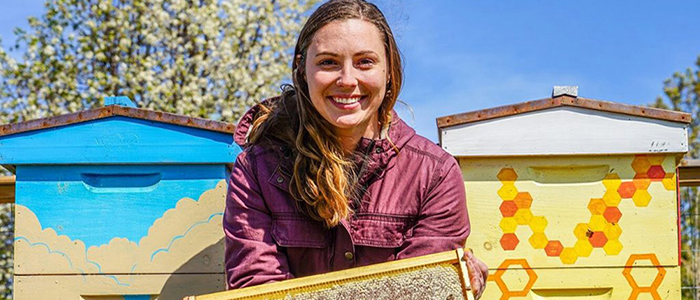[vc_row][vc_column][vc_column_text]
March 22, 2021
[/vc_column_text][/vc_column][/vc_row][vc_row][vc_column][vc_column_text]Members of the VT Stream Team outreach committee, including Interfaces of Global Change IGEP fellows, Abby Lewis & Heather Wander, have created a “stream box” as part of an educational outreach initiative. The stream box, a beautifully hand-painted mailbox located near the Nature Play Space at Blacksburg’s Heritage Park, is filled with activities and ID guides for people of all ages to learn about Tom’s Creek. The project is a collaboration with the New River Land Trust, a local non-profit formed to protect farmland, forests, open spaces and historical places in Virginia’s New River region, and their Youth Education program, which also stewards the Nature Play Space at Heritage Park.
The Stream Team Outreach committee initially headed out to Tom’s Creek for a trash clean-up endeavor last fall, but didn’t find any trash to remove! They instead chatted with a family by the creek to inquire what they might like to see related to environmental outreach in the area. The family recommended ID guides – they loved to come out to the creek to explore but didn’t have the knowledge or resources needed to identify what they find. This encounter sparked the idea for the Stream Box project. The Stream Team group then reached out to the New River Land Trust outreach coordinator, Melissa “Mel” Henry, to pitch the idea and collaborate. Mel helped with obtaining permission from the Town of Blacksburg Parks & Recreation department, designing educational materials, and also connected the group with Will Lattea, the Environmental Management Specialist for the Town of Blacksburg, who provided photos and resource ideas for the box.
What’s in the Stream Box? One activity is designed to help kids observe how different sections of the stream move faster than others by “experimenting” with sticks in the water. Another activity, called “Hear, See, Smell, Touch” asks kids to slowly and carefully make observations about the world around them. Also included are scavenger hunts, a tutorial for how to use the iNaturalist app, basic ID guides for plants, reptiles and amphibians, and macro-invertebrates that are likely to be observed near the stream.[/vc_column_text][vc_column_text]Substantial contributions to this project were made by Grace O’Malley, Jared Conner, Katherine Pérez Rivera, and Abby Lewis, all from the VT Stream Team. Heather Wander, Tadhg Moore, and Adrienne Breef-Pilz also helped brainstorm projects ideas last fall. Funding for the project is provided by the VT Stream Team. [/vc_column_text][/vc_column][/vc_row][vc_row][vc_column width=”1/2″][vc_single_image image=”54887″ img_size=”large”][vc_single_image image=”54905″ img_size=”large” add_caption=”yes” alignment=”center”][vc_single_image image=”54890″ img_size=”large”][/vc_column][vc_column width=”1/2″][vc_single_image image=”54888″ img_size=”large”][vc_single_image image=”54912″ img_size=”large” add_caption=”yes” alignment=”center” style=”vc_box_border”][/vc_column][/vc_row][vc_row][vc_column][vc_separator style=”shadow”][/vc_column][/vc_row]











